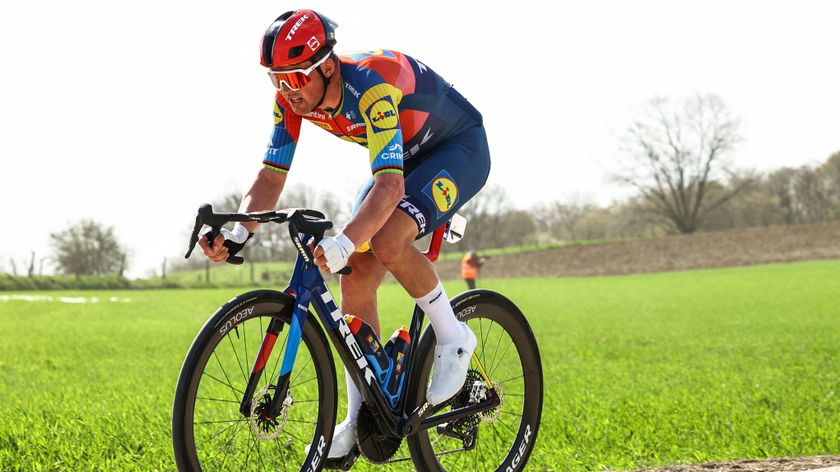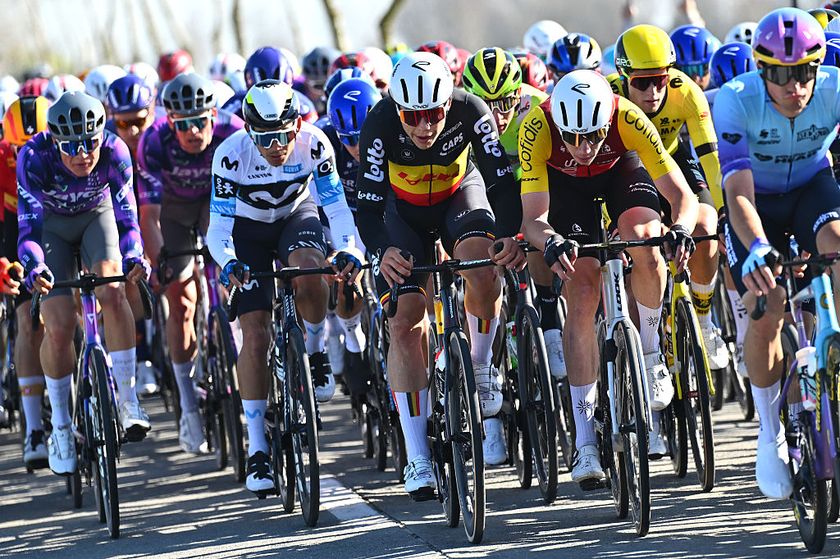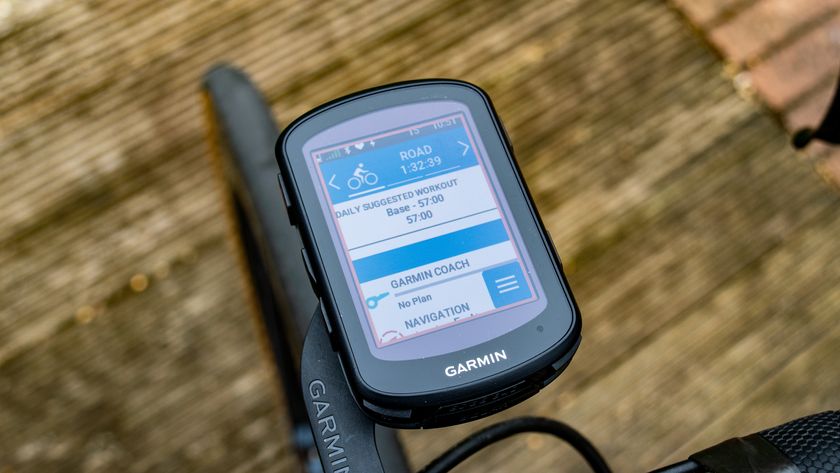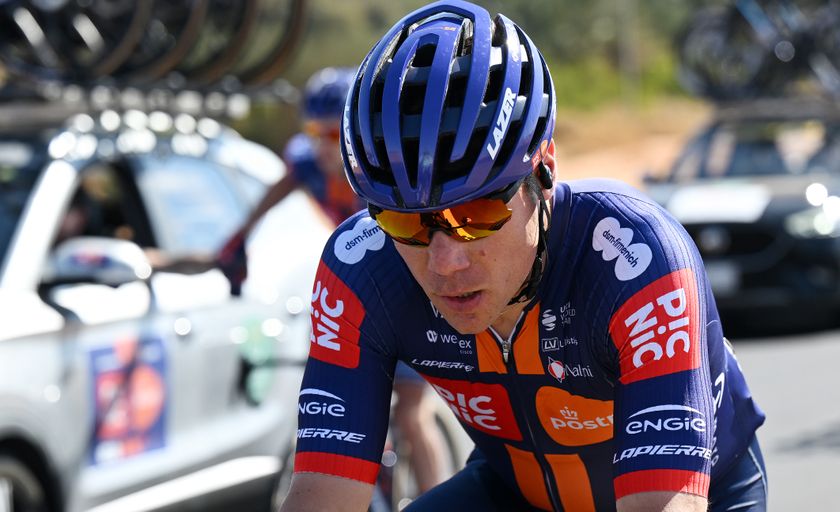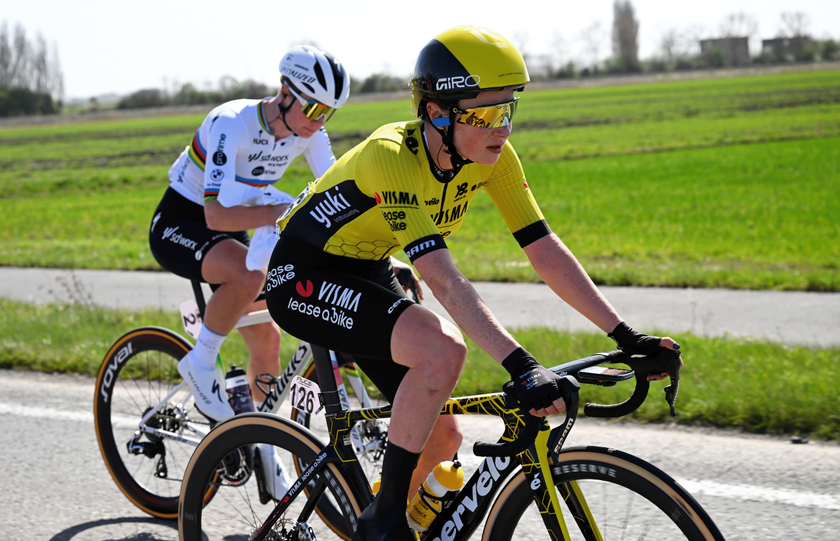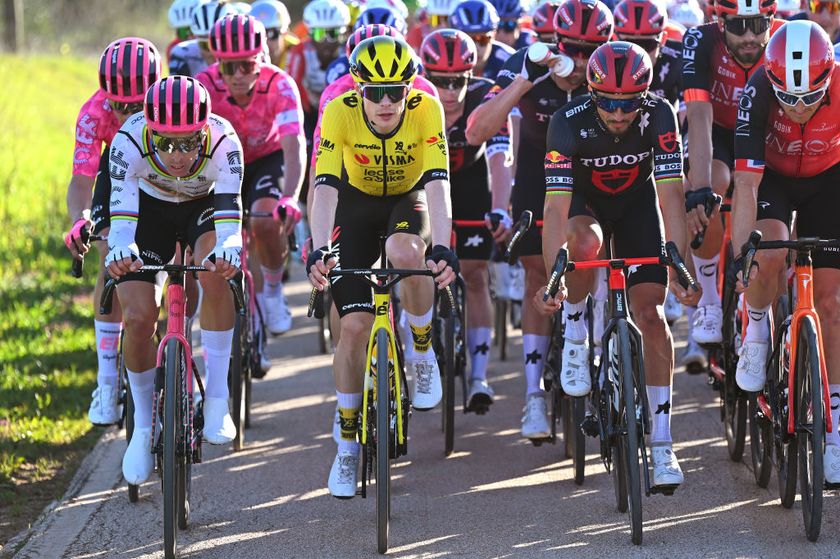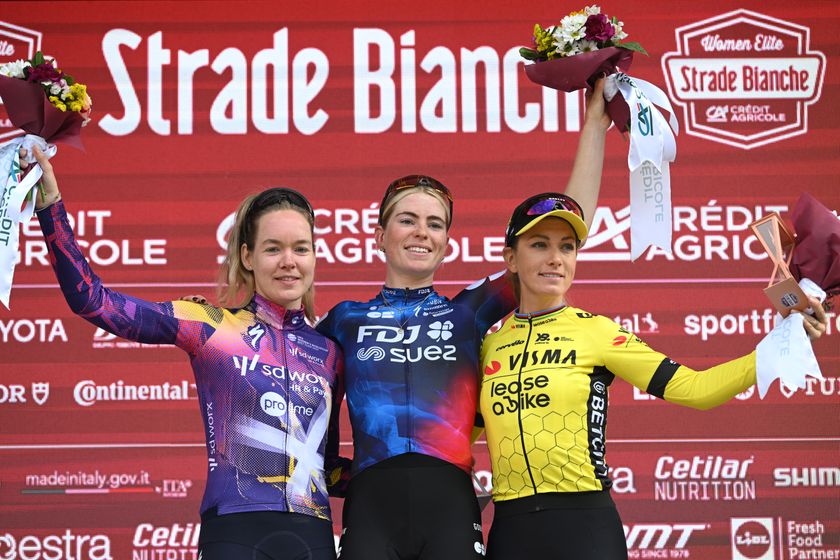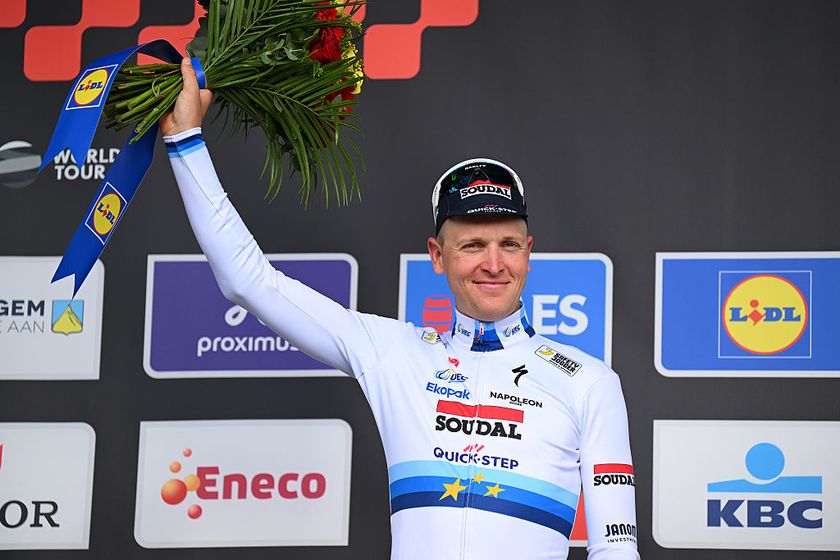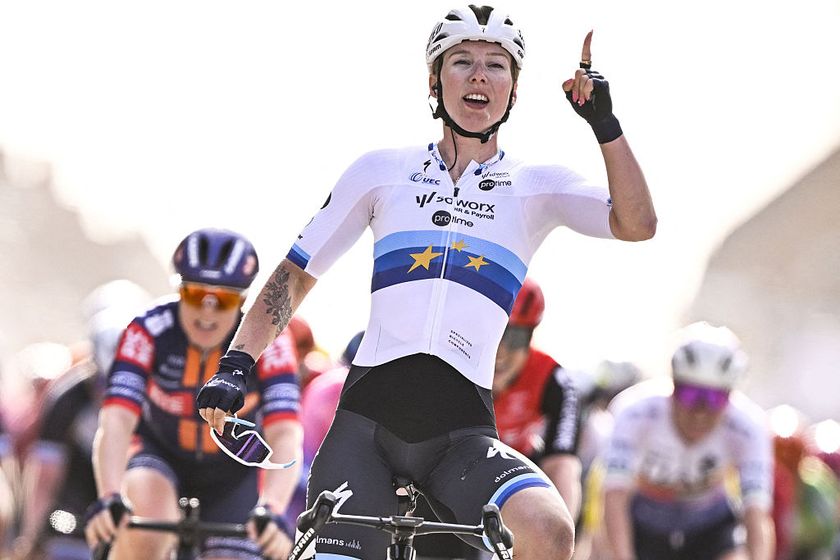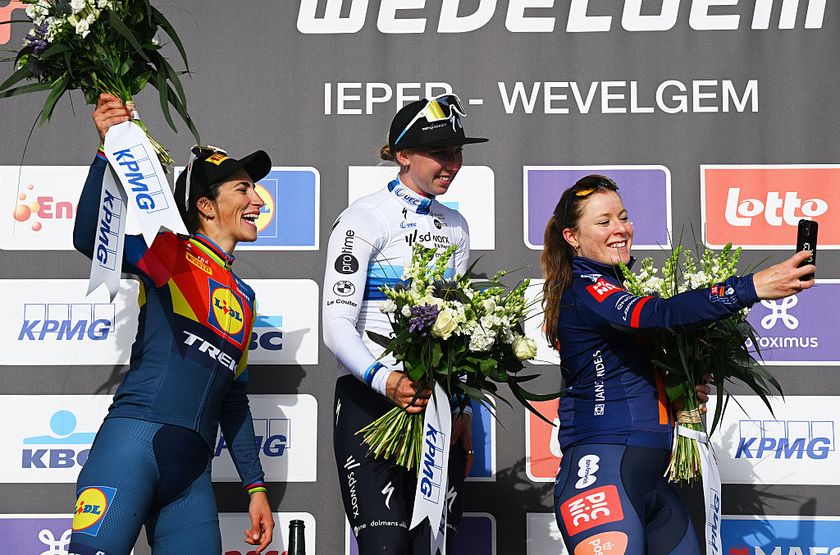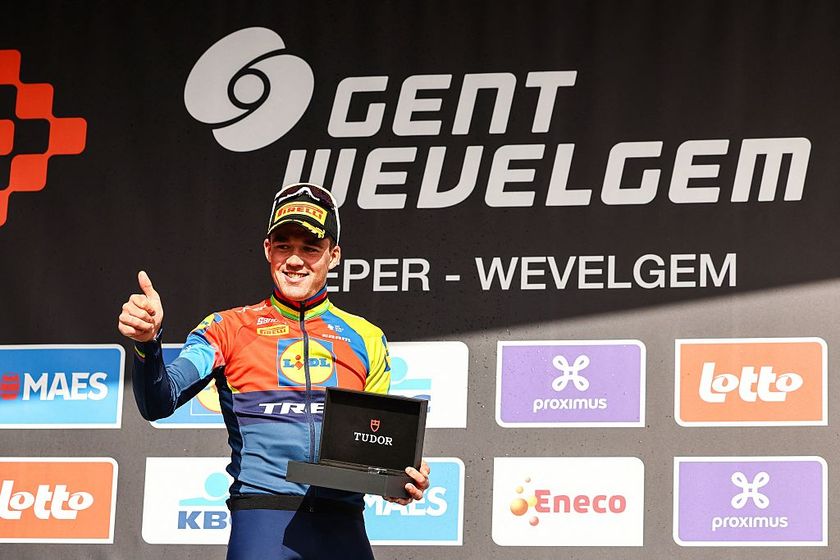Tour de France 2016: 8 key stages - Video
From Mont-Saint-Michel to Paris







The 2016 Tour de France is the 103rd edition of the longest running Grand Tour on the calendar and will see Chris Froome (Team Sky) try to take his third overall victory.
Taking on Froome will be former champion Alberto Contador (Tinkoff) and two-time runner-up Nairo Quintana (Movistar). 2015 Vuelta a Espana winner Fabio Aru (Astana) is set to make his debut at the Tour de France and is likely to be a tough competitor for Froome.
The route of this year's race brings the riders from the picturesque Mont-Saint-Michel, through the Pyrenees, the Alps and back up north to Paris. There will also be visits to Spain, Andorra and Switzerland along the way. After relatively little time trialling in the 2015 edition, organisers ASO have put in two challenging tests against the clock.
Cyclingnews has picked out eight stages that could prove key in the battle for the fabled yellow jersey. Click here to subscribe to the Cyclingnews video channel.
Stage 7: L'Isle-Jourdain – Lac de Payolle, 162km
The Col d’Aspin has never been one of the Tour’s most dramatic, fashionable, or important climbs. When the Tour’s inventor, Henri Desgrange, waxed lyrical about the Col du Galibier, he proclaimed, "Oh, Sappey! Oh, Laffrey! Oh, Tourmalet! Beside Galibier you are but weak and ordinary beers." He didn’t even mention the Aspin.
It’s a pretty climb, the Aspin. It just scrapes 1,500m altitude at the summit, and it’s a pleasantly even six or seven per cent from bottom to top, with lovely views down a deep valley along the final few kilometres, and the observatory atop the Pic du Midi de Bigorre towering on the horizon. But Tour-winning moves have rarely happened on the Aspin’s slopes – it’s nestled between harder climbs, the Tourmalet on one side, the Peyresourde on the other and so riders wait for them. The Aspin is destined to always be an hors d’oeuvre, never the main course.
Get The Leadout Newsletter
The latest race content, interviews, features, reviews and expert buying guides, direct to your inbox!
Until now, that is. The organisers have made it the centrepiece of this stage, by having it as the sole significant climb, then putting the finish not far from the top. The riders will climb the 12km Aspin, crest the summit, descend for 5km, then turn left on the D113 (which will make another appearance tomorrow – it’s the start of the Hourquette d’Ancizan climb) for the finish at the scenic Lac de Payolle. A long climb followed by a short descent is fertile territory for attacks, and this has the potential to be a GC shoot-out, even if it’s only a good way of finding out exactly who has good legs and who has bad, with two more Pyrenean stages to come. And if anybody’s feeling really good, we might see the most decisive climb of the Col d’Aspin since it first appeared in the race in 1910.
Stage 9: Vielha Val d'Aran – Andorra-Arcalis, 184km
Modern management theory, in the touchy-feely post-millenial era, dictates that criticism alone is not motivating. We are encouraged to sandwich the malodorous filling of the negative between slices of positivity, the better for self-improvement and self-esteem. However, viewed through this prism, stage 9 of the 2016 Tour de France is the equivalent of the full hairdryer from Alex Ferguson. It’s got a very, very hard beginning, a very, very hard middle, and a very, very hard finish.
Arcalis is a relative newcomer among the summit finishes of the Tour. It’s twice appeared in the race, in 1997 and 2009. While it’s not the most atmospheric climb – nor does it have the character of an Alpe d’Huez or a Ventoux – it does bring out breakthrough performances in Tour contenders. In ’97, Jan Ullrich gave a monstrous demonstration of what, in hindsight, might be considered the answer to the question, ‘What happens if you give a prodigious physical talent copious performance-enhancing products?’ and single-handedly won the Tour on this one climb. In 2009, it could be argued, Bradley Wiggins discovered himself as a Tour contender. He started the climb as a good time triallist, who’d reached the mountains close to the race lead by dint of a solid efforts in the individual and team time trials. He finished it as a future Tour winner, having ridden up in the company of Armstrong, Schleck, Nibali et al.
This will be a crucial day for the 2016 Tour, also. Four significant climbs, plus a summit finish on which surprises are often sprung, makes it the perfect place for an ambush. Or, more likely, and going against the grain of history on this climb, shock and awe tactics from the usual suspects.
Stage 12: Montpellier – Mont Ventoux, 185km
After the Pyrenees, the second act of the GC opens when the peloton rolls out of Montpellier. Destination: Mont Ventoux.
Bastille Day will add another layer of expectation to the race. The easterly direction of travel across the Rhône Valley leaves the peloton at risk of a buffeting. The race takes the classic approach via Bedoin, 22km before the summit. The action kicks off when the race reaches the hairpin bend at Saint-Ésteve where the race disappears into the forest. For nearly 10km the road pitches up at nearly 10 per cent and it will atomise the peloton. The drafting effect all but disappears on the steep but inconsistent gradient and the race becomes a battle of engines. When the road emerges at Chalet Reynard it’s into the landscape for which the climb is famous: the exposed white limestone for the final 6km. The gradients pitch up to about 10 per cent in the final 1.5km from the Tom Simpson memorial onwards. It’s the context that lends Mont Ventoux, the hardest climb in France, extra teeth this year. The day after is the crucial Ardèche TT and the route planner Thierry Gouvenou is banking on riders paying for the effort they put in here. The problem is that Ventoux is so hard, dosing one’s effort is an academic exercise.
Two things could happen: the GC riders are forced into a huge fight on the slopes of Ventoux, or they treat the approach as conservatively as they can and allow a big break to get away and contest the finish. The big teams’ logic could be that it’s better to let the Ventoux and the yellow jersey pass for now and start clawing back the deficit in the Ardèche and the succession of climbs in the Alps. But whatever the strategy, it’s Ventoux on Bastille Day. It’s going to be a crucial day.
Stage 13: Bourg-Saint-Andéol – La Caverne du Pont-d'Arc, 37km
More often than not, time trials are not the most compelling television. What will be compelling today, however, are the TV pictures of the spectacular Gorges de l’Ardèche. This 37km time trial from the banks of the Rhône, west to the cutaway cliffs of the gorge and the cave paintings in the grotto of the Caverne du Pont-d’Arc will provide a visual feast.
Don’t let the scenery obscure the action entirely in this case – it could be a belter. The parcours starts with a gradual 7km climb up onto the Plateau du Laoul before descending into the gorge via the Col du Serre to Tourre. It’s technical, with a couple of switchbacks which riders who are on the limit will have to be wary of. The race exits the climb at the town of Vallon-Pont-d’Arc and there is 5km of gradual ascent to the finish at the cavern. All told, it’s a testing TT: not as testing as Embrun-Chorges in 2014 but something akin to the helter skelter Besancon TT in 2012, which Bradley Wiggins won by 35 seconds as he started to build a big margin on his rivals.
This is no drag race, so the out-and-out testers like Tony Martin are disadvantaged and we can expect the GC contenders to do well – could this be Tejay van Garderen’s moment to confirm his promise?
More importantly, performances will have to be seen through the prism of what happened the day before on Mont Ventoux. It’s unlikely riders vying for yellow will have spared themselves the day before, where the opportunity to land big blows would have been very obvious. Yet riders who went too deep on the bald mountain may find their Tour hopes cut to ribbons here. Who comes out of this brace of stages with their GC hopes the least damaged will head to the Alps full of confidence.
Stage 17: Bern – Finhaut Émosson, 184km
The day after a repose in Berne, four big stages in the Alps mean this stage is sure to offer up races within races. Before the stage hits its crux, the penultimate climb, the peloton will have traversed the third category Saanenmöser and Col des Mosses climbs, the latter of which towers over Aigle, home of the UCI. Finhaut-Emosson was first used in the Dauphiné two years ago and this year the Col de la Gueulaz – the actual name of the climb – accedes to the Tour. It’s a brute and has only been made accessible by the opening of a tunnel through the mountain which will transfer the riders back to France. The stage adopts the same approach as the corresponding stage in the Dauphiné, by tackling the tough Col de la Forclaz (12.6km at 8.2 per cent) before dropping back down to the small town of Trient. Then the peloton tackles the lighter lower slopes of the Gueulaz, which turns vindictive in the final 7km, with gradients well over 10 per cent in places. The last 800m or so are all above 12 per cent. When the Dauphiné tackled it in 2014, riders finished in tired dribs and drabs.
Given what’s just come before and what lies ahead, it’s likely that an escape of top climbers and GC rejects will fight out this stage by using the Forclaz as a springboard to move clear and contest the stage. The GC riders will bide their time until the closing kilometres above Finhaut. In 2014, Contador attacked Froome here with a couple of kilometres to go and turned a 12-second deficit into an eight-second lead.
Of course, the caveat is if the blood of a main contender is in the water early, expect rivals teams to try to press home their advantage by sending men up the road to lend a pull later.
Stage 18: Sallanches – Megève, 17km
The Tour holds its first mountain time trial since the 2004 ascent of Alpe d’Huez. The last before that was the Bourg St Maurice-Val d’Isère event in 1996. There’s a reason the ASO uses them sparingly: they can be too definitive and allow the strongest rider an opportunity to kill the race stone dead. The chances are, this late in the race, there’s more than an inkling of who’s going to win and mountain TTs don’t jeopardise proceedings, they confirm it. On the other hand, a race leader who shows frailty here will be mercilessly targeted over the next few days. At the Giro, which has plugged away with the format, the last three mountain TTs have been won by the pink jersey-elect who also took overall honours (there is the asterisk above the 2011 result which went to Contador). So the ASO have hedged their bets somewhat by making this a TT of two halves.
The first 4km are flat, before the course hits the Côte de Domancy, which is short and steep – 2.5km at 9.4 per cent say the official numbers. It’s a climb imbued with history, however, as it formed part of the circuit where Bernard Hinault won the Worlds in 1980. The climbing then tails off with 4km that track at about 5 per cent. The next 4km rise like steps up the Côte de Chozeau (3.1km at 5.4 per cent), which tops out at 1,219m. Then there’s a 2km descent to the finish in Megève. It’s a long, straightforward decline, so riders will be in their biggest gear, if they still have the legs to turn it.Whatever strategy the riders adopt, this is a stage that will be crucial in shaping the final GC. ASO will be hoping they’ve avoided nailing down the lid on the race, and given challengers enough fillip to go on the attack in the final two days in the Alps.
Stage 19: Albertville – Saint-Gervais Mont Blanc, 146km
Albertville is a terminus used only twice before today. In 1998, Jan Ullrich won here after breaking away on the Madeleine with only Marco Pantani for company. In 2012 it was the start of the stage to La Toussuire, where Froome stirred and Bradley Wiggins was shaken. Meanwhile at the other end of the stage, the climb to Le Bettex has only had one previous finish in the Tour and it will be well-remembered by those of a certain age: this was where Thierry Claveyrolat took one of two stage wins and put a down payment on the polka-dot jersey in 1990. Today it will be all about the GC. At 146km, it’s short, but there are four hard climbs. First up are the Col de la Forclaz de Montmin (Category 1) and the Col de la Forclaz Queige (cat 2). But these are mere leg-looseners for the second half which starts with the debut climb of the Montée de Bisanne, a super-category 12.4km climb that averages 8.2 per cent: the final 2km touch an average of 10 per cent.
For the brave – or the renegade – these final steep ramps could be the spot for a daring attack but with around 52km to go it will be the last throw of the dice if it’s a contender. From the top of the Bisanne, it’s still 40km of descent which also retraces the previous day’s TT route to Domancy. At Venex, the peloton hits a wall. The first kilometre of the Bettex climb averages 13 per cent, and remains almost as steep for the next 2km – just the sort of terrain to shed helpers and leave the leaders to fight it out. There are two relatively flat kilometres before the road pitches up. Watch closely as the race hits Le Gollet: there’s a kilometre that averages nigh-on 10 per cent and with 3km left to ride it’s just the kind of place a contender could launch an attack and gain 30 or 40 seconds.
Stage 20: Megève – Morzine, 146km
Perhaps the most recognisable mark of Christian Prudhomme’s reign as Tour director has been the inclusion of very short, intense final mountain stages. One has to go back to 2010 to find a final mountain stage that was over 160km. The aim, says Thierry Gouvenou, is “total suspense right up until the very end of the race.” Given that Chris Froome was a team-mate or two from losing the yellow jersey on Alpe d’Huez last year, it’s unsurprising there is similar jeopardy built into this year’s race.
This year, the mountains end as they start: with a tricky descent. Just as at Lac de Payolle, this final stage into Morzine makes a virtue of a technical descent off the Joux-Plane, which hasn’t been used in the Tour since 2006. Back then it was the set for Floyd Landis’s testosterone-fuelled rampage through the Alps – no one can deny ASO has a black sense of humour.
If the green jersey competition is tight, the more able climbers among the sprinters may try and crest the Aravis ahead of their rivals. By now it’s gamble or die for pursuants in the GC, so there’s value for them in trying to get team-mates up the road to lend a hand on the way up the Joux-Plane. But this deep into the race, who has those kind of resources left? The Joux-Plane’s opening touches almost 10 per cent before levelling off for the next 5km. However, the following 6km lurches up again and provides the perfect setting for a late ambush. The parcours crosses a false flat to the Col du Ranfolly and the technical descent begins. But it will only really be in play if the yellow jersey is cast as the chaser; it’s not that technical that a downhill attack from the yellow jersey would be anything other than valedictory.
